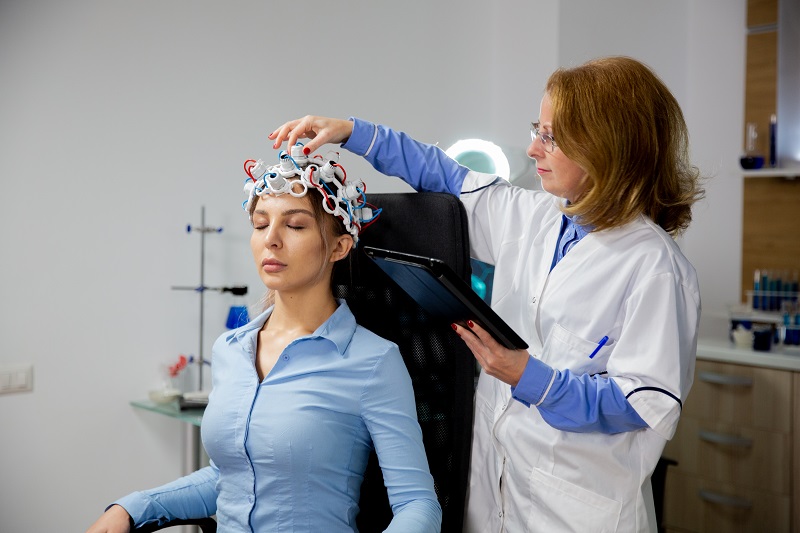People with different mental illnesses and other psychiatric difficulties sometimes require help in different phases of their lives, including regular living, work, social learning and many more. Among different solutions, the most prominent one that can help these people improve signs and functioning is nothing but mental health clinics.
Apart from mental health clinics, many other treatment options can prove extremely beneficial for people with different mental disorders. rTMS treatment or repetitive transcranial magnetic stimulation is notable among them. When medication-based treatments for mental disorders aren’t working, doctors may suggest repetitive transcranial magnetic stimulation.
Repetitive transcranial magnetic stimulation therapy or rTMS treatment uses magnetic pulses to treat particular regions of the human brain. Doctors have been using it since 1985 to alleviate the severe unhappiness and feelings of anguish that can appear with depression. This therapy is believed to be extremely effective among different treatment options.
If you or your loved one has undertaken several treatments for depression but didn't get desired success, rTMS treatment may be an efficient option.
Reason Behind the Use of rTMS
As we stated earlier, rTMS treatment is an alternative option when other treatments like medications and psychotherapy haven’t worked properly. Sometimes, doctors may incorporate rTMS with conventional therapies, such as antidepressants. Those who meet the following criteria may benefit the most from this treatment.
-
Anyone who tried other treatment options, such as antidepressants, counselling sessions and other medications, psychotherapy without success.
-
Anyone unable to take other processes like electroconvulsive therapy (ECT).
-
Those who have a history of seizures or can’t withstand anaesthesia.
-
Anyone who isn’t currently fighting with substance or alcohol use problems.
It’s crucial to cite that rTMS treatment isn’t a first treatment option. There are so many other options too for treating depression or mental issues. So before starting this treatment, you must ask your doctor first.
The Process of rTMS Treatment
Regarding the rTMS treatment procedure, it's significant to note that rTMS is a noninvasive method that usually requires 30 to 60 minutes. Below are the steps of a conventional rTMS treatment session.
-
The first step of an effective rTMS treatment method is to sit. After sitting in a comfortable position, a doctor puts in a special electromagnetic loop near your head, particularly a brain area that operates mood.
-
The coil produces a magnetic sensation in the human brain. The sensation isn’t unbearable, but it can feel like knocking on the skull.
-
These pulses create electrical currents in the human body's brain cells, which help treat mental disorders.
-
The patient can resume regular activities such as driving, cooking, and outdoor visits after rTMS treatment.
It’s believed that these electrical currents facilitate nerve cells in a complicated way that can lessen sadness. The coil placement completely depends on the patient's need and the doctor's preference.
The Side Effects and Drawbacks of rTMS
Though rTMS treatment is an effective method, it includes several obstacles also. Though rTMS is not painful, some patients report irritation after this treatment. The electromagnetic pulses can make the facial muscles get expand or itch. The rTMS method can generate side effects, including:
-
Feelings of emptiness in the head.
-
Momentary hearing difficulties due to the noisy magnet sound.
-
Gentle headaches.
-
Tightening in the face, scalp or jaw.
-
rTMS can sometimes produce seizures.
Differences Between rTMS and ECT
Doctors can deliver numerous brain stimulation therapies that may reduce depression. Apart from rTMS treatment, another one is electroconvulsive therapy (ECT). The main difference between these two is mentioned below.
-
In the ECT method, electrodes are placed on strategic regions of the brain and produce an electric current that almost causes a seizure to arise in the brain. For this reason, doctors conduct the method under general anaesthesia. Doctors also give muscle relaxant medicine which keeps the patient from trembling during the stimulation part of the treatment.But in rTMS treatment, patients don’t have to receive any relaxant medications, which can lessen the threats of probable side effects.
-
Another key difference between the two processes is the capacity to treat specific regions of the brain. In the rTMS, the coil is placed over distinct areas of the brain for which the impulses only affect that portion of the brain. But ECT doesn’t target particular areas.
Final thoughts
So, these are some major facts about rTMS treatment that make it a worthy one to treat different mental disorders. Make sure that you visit a credible clinic for this treatment.












Social Plugin